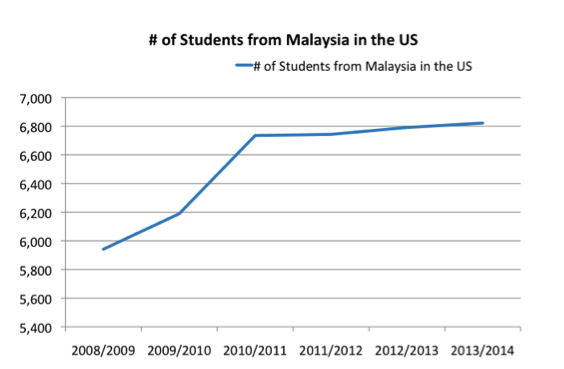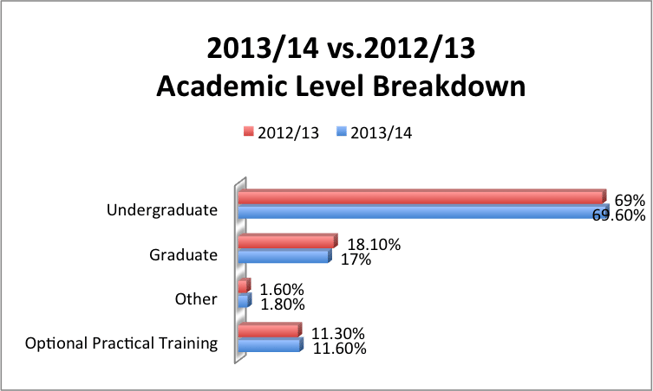
This week we launch our Malaysian mini-series giving you the international student recruitment landscape along with our tips for marketing your institution in this country. Our two-part blog post should help your team relate to prospective Malaysian students.
Before we dive in, let’s take a moment to remind our readers of our upcoming #NAFSA2015 Conference presentations. If you or your colleagues are attending the show, you’ll want to hear from the great lineup at all 3 of these free sessions on global digital marketing and international student recruitment:
- MYSTERY SHOP INSIGHTS - Wed 5/27 11:45am - how your peers fail (or succeed) at digital mrktg
- STUDENT MOTIVATIONS - Wed 5/27 2:45pm - groundbreaking research from 800,000! students around the world
- CHALLENGES OF IMPLEMENTING - Fri 5/29 8am - practical marketing experience from your peer institutions in field
Our blog from 5/6/15 provides more detail on these great presentations. We hope to see you there. Now, let's travel to Malaysia...
Part 1 of our Malaysia series will help you understand the market by providing you with the facts and figures of students from Malaysia studying abroad including where and what they study. In next week’s blog we will discuss where you should be focusing your marketing efforts online and what you should be providing your new students when they arrive.
We hope this 2-part series will help you take full advantage of this growing market.
We are excited to be learning about and sharing the changes happening in Malaysia over the past few years. This market has a number of positive economic and other growth trends.
In 2010, Malaysia launched the New Economic Model (NEM or Vision 2020), which aims for the country to reach high-income status by 2020. Though Malaysia was hit by the Global Financial Crisis in 2009, it recovered rapidly. The World Bank Report of Malaysia in 2015 discusses the dramatic growth the country has experienced over the past four decades. Malaysia’s growth has been accompanied by an inspiring reduction in poverty from 49.3% in 1970 to just 1.0% by 2014.
The higher education landscape in Malaysia has gone through substantial changes. A number of factors are responsible for the high demand for higher education among Malaysians, both in Malaysia and abroad. Family influencors are both personal and societal.
But before we dive into numbers, let’s take a look at how the country structures its education system and some other relevant information:
- The school system is structured on a 6+3+2+2 model, with six years of compulsory primary education beginning at age seven, followed by three years of lower secondary education, two years of upper secondary, and two years of pre-university senior secondary study.
- Bahasa Melayu is the primary language of instruction in Malaysian public schools. English is taught as a second language in both primary and secondary schools.
- As of January 2015, the International Schools Consultancy (ISC) listed Malaysia as having 143 international schools.
- Also, research shows that Malaysian females are more interested in furthering their education than Malaysian males.
- Finally, based on i-graduate data we’ve seen over the past few years, it appears that Malaysians, in general, are some of the happiest and most satisfied people on earth. We don’t know if it is genetics, the food, or simply the climate, but they apparently report higher satisfaction with their decisions and their lives than the rest of us. Whatever it is they’ve got, we’d like to bottle it.
You can find out more interesting facts from the archive Education in Malaysia by World Education News & Reviews.
Malaysia is both a big sender and receiver of international students. The top four study abroad countries for Malaysian students are Australia, United Kingdom, China and the US. The most common majors for Malaysian students are Business and Engineering.
Based on Institute for International Education’s Open Doors Report in the 2013/14 academic year, 6,822 students from Malaysia were studying in the US (up 0.5% from the previous year). Malaysia is the 24th leading place of origin for students coming to the US.
All of this translates to Malaysian students in US universities contributing $218 million to the US economy last year, according to the US Department of Commerce. Pretty great statistics, right?
Chart 1. The numbers of students from Malaysia in the USA

The majority of these 6,800+ Malaysian students in the US study at the undergraduate level. Chart 2 shows the breakdown of academic levels of this group of students. And as you can see, other than the number of graduate students, all the other numbers are slightly higher in comparison to the 2012/2013 numbers.
In the 2013/2014 school year, their breakdown was as follows: 69.6% undergraduate (up 0.6%); 17% graduate students (down 1.1%); 1.8% other (up 0.2%); 11.6% Optional Practical Training (up 0.3%).
Chart 2. Academic level breakdowns of Malaysian students in the USA

(Source: Open Doors Report 2014 by IIE)
It is clear that the number of Malaysian students studying abroad is growing every year. We think this part of the world deserves more of our attention as international student recruiters. Check in next week to see our recommendations on how to engage prospective Malaysian students.
It is all about getting your institution noticed and clearly explaining what differentiates your institution. Because, let's be honest, if you are in Malaysia looking at the US academic landscape, all those universities in the middle look very much the same. That is where strong marketing messaging and content come in.

